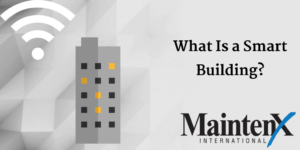
A “Smart Building” links a building’s systems to a network, passively collecting data on their function. That information lets managers improve building operations by allocating resources optimally. Certain functions can even be automated.
Essentially, smart buildings provide building services that make their occupants happier and more productive by streamlining and automating things like:
– Lighting
– Climate control
– Air quality
– Security
– Sanitation
Smart buildings do this while also lowering costs and environmental impact over the building’s life. Smart buildings use IT systems to link an assortment of smaller systems which normally operate autonomously. That way, these systems can share data, enhancing a building’s overall performance.
There are many ways a smart building can save money; most involve optimized operation and increased efficiency:
– Preventative maintenance of equipment: Systems detect problems in performance before they cause issues with the power grid.
– Dynamic power consumption: By analyzing how and when you use electricity, a smart building can change its behavior to lower energy costs; it can even make you money by selling surplus power back to the grid!
Smart Buildings are the Future
Smart buildings do a lot more than save money and energy. They also extend the life of your equipment, appliances and systems. They allow innovation by making information easily accessible. They turn buildings into mini-power generators by allowing the system to sell the unused energy back to the market. They are a key element of a future in which IT and human resourcefulness come together to help foster a more connected and responsible world.

